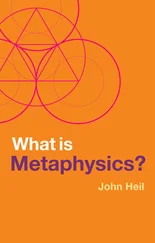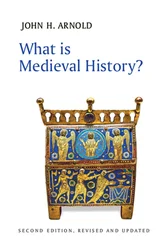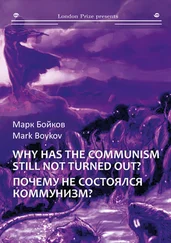This brings me to the stuff we don’t worry about enough. While upper-middle-class parents worry about whether to put their children in forward- or backward-facing strollers, more than one in five children in the United States are growing up below the poverty line, and nearly half the children in America grow up in low-income households. Children, and especially young children, are more likely to live in poverty than any other age group. This number has increased substantially during the past decade. More significantly, these children face not only poverty but also a more crippling isolation and instability. It’s not just that many children grow up without fathers: They grow up without grandparents or alloparents either, and with parents who are forced to spend long hours at unreliable and low-paying jobs. Institutions haven’t stepped in to fill the gap. We still provide almost no public support for child care. We pay parents nothing and child-care workers next to nothing.
Of course, we’ve felt for a long time the moral intuition that neglecting children is wrong. But more recently, research into epigenetics has helped demonstrate just how the mechanisms of care and neglect work. Research in sociology and economics has shown empirically how significant the consequences of early experience can be. The small variations in middle-class parenting make little difference. But providing high-quality early childhood care to children who would otherwise not receive it makes an enormous and continuing difference up through adulthood. The evidence suggests that this isn’t just a matter of teaching children particular skills or kinds of knowledge—a sort of broader institutional version of parenting. Instead, children who have a stable, nurturing, varied early environment thrive in a wide range of ways: better health, less propensity to crime, more successful marriages. That’s just what we’d expect from the evolutionary story. I worry more and more about what will happen to the generations of children who don’t have the uniquely human gift of a long, protected, stable childhood.
KEITH DEVLIN
Executive director, H-STAR Institute, Stanford University; author, The Man of Numbers: Fibonacci’s Arithmetic Revolution
Are we about to see advances in mathematics come to an end? Until last year, I would have said no. Now I’m not so sure. Given the degree to which the advances in science, engineering, technology, and medicine that created our modern world have all depended on advances in mathematics, if such advances were to end then it’s hard to see anything ahead for society other than stagnation, and perhaps decline. How likely is this? I don’t know. The escape clause in this year’s Edge Question is that word “should.” Had the question been “What are we worried about?” I suspect that any honest answer I could give would have focused on personal issues of health, aging, and mortality. Mathematics—dead or alive—would not have gotten a look.
Sure, there are many things going on in society that disturb me. But it’s a consequence of growing older to view changes in society as being for the worse. We have been conditioned by the circumstances prevailing in our formative years, and when those circumstances change—as they must and should, since societies are living entities—we find it disconcerting. Things inevitably seem worse than they were in our childhood, but that reflects the fact that as children we simply accepted things as they were. To let a disturbed sensation as an adult turn into worry would be to adopt an egocentric view of the world. That said, we are reflective, rational beings with a degree of control over our actions both individual and collective, and it’s prudent for us to read the signs and judge if a change in direction is called for.
One sign I came across unexpectedly last year was a hint that mathematics as we know it may die within a generation. The sign was, as you may suspect, technological, but not the kind you probably imagine. Though a stream of commentators in the 1960s and 1970s lamented that the rise of calculators and computers was leading to a generation of mathematical illiterates, all that was happening was a shift in focus in the mathematics that was important. In particular, a high arithmetical ability, crucial to successful living for centuries, suddenly went away—just as basic crop-growing and animal-rearing skills went away with the onset of the Industrial Revolution. In place of arithmetic skills, a greater need for algebraic thinking arose. (That in many cases the need was ill met by being taught as if it were arithmetic does not eliminate the new importance of algebraic skills in today’s world.) There’s no denying that technological advances change the kind of mathematics that is done. When calculating devices are available to everyone on the planet (North Korea excepted), which will almost certainly be the case in the next ten years or so, the world is unlikely to ever again see the kinds of discoveries made in earlier eras by mathematical giants such as Fermat, Gauss, Riemann, and Ramanujan. The notebooks they left behind show they spent many hours carrying out calculations in longhand as they investigated primality and other properties of numbers. This led them to develop such a deep understanding of numbers that they could formulate profound conjectures, some of which they or others were subsequently able to prove.
There are likely to be properties of numbers that will never be suspected, once everyone has access to powerful computing technology. (On the other hand, there’s a gain, since the computer has spawned what is called experimental mathematics, where massive numerical simulations give rise to another kind of conjecture—ones that likely would not have been discovered without powerful computers. I described this phenomenon in The Computer As Crucible , a book with Jonathan Borwein a few years ago.) So technology can certainly change the direction of mathematical discovery. But can it cause its death? In September last year, I caught a glimpse of how this could occur. I was giving one of those (instantly famous) Stanford MOOCs, teaching the basic principles of mathematical thinking to a class of 64,000 students around the world. Since the course was on university-level mathematical thinking, not computation, there was no possibility of machine-graded assignments. The focus was on solving novel problems for which you don’t have a standard procedure available—in some cases, constructing rigorous proofs of results. This kind of work is creative and symbolic and can be done only by covering sheets of paper (sometimes several sheets) with symbols and diagrams, sometimes using notations you devise specially in order to solve the problem at hand.
In a regular university class, I or my teaching assistants would grade the students’ work, but in a MOOC that’s not feasible, so I made use of a method called calibrated peer evaluation, whereby the students graded one another’s work. To facilitate the anonymous sharing, I asked students to take good-quality smartphone photos of their work, or scan their pages into PDF, and upload them to the course Web site, where the MOOC software would organize distribution and track the grades. Soon a few students posted questions on the MOOC discussion forum, asking if they could type up their work in LaTeX, a mathematical typesetting program widely used in advanced work in mathematics, physics, computer science, and engineering. I said they could. In fact, I had used LaTeX to create the MOOC resources on the Web site, to create the weekly assignment sheets, and to self-publish the course textbook.
Now, LaTeX is a large complex system with an extremely long and steep learning curve, so I was not prepared for what happened next. From that first forum post on, hardly anyone submitted their work as an image of a handwritten page! Almost the entire class (more precisely, the MOOC-typical 10 percent who were highly active throughout the entire course) either went to tortuous lengths to write mathematics using regular keyboard text or else mastered sufficient LaTeX skills to do their work that way. The forum thread on how to use LaTeX became one of the largest and most frequently used in the course. I shudder to think of the amount of time my students spent on typesetting—time that would have been far better spent on the mathematics itself.
Читать дальше












